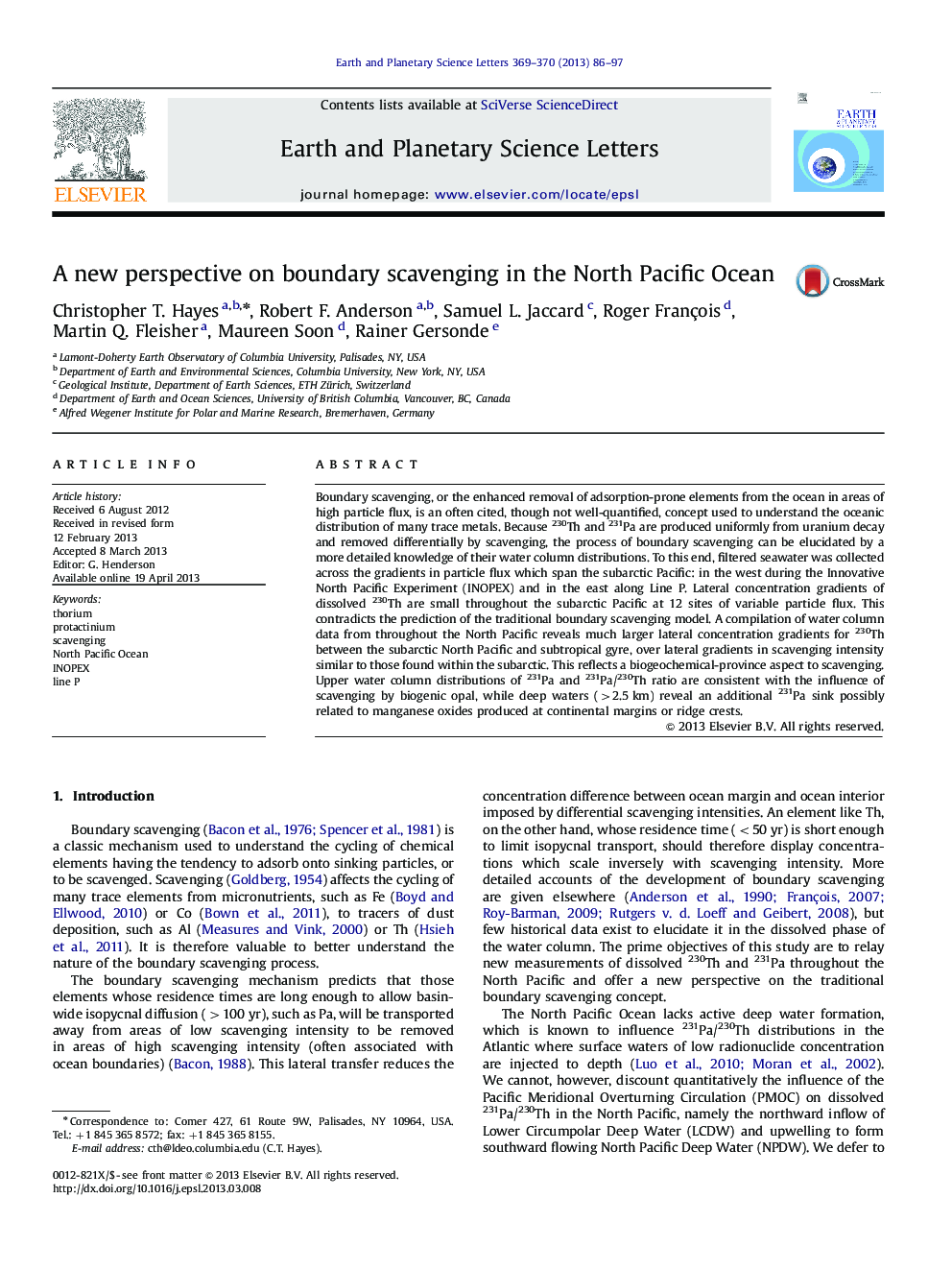| Article ID | Journal | Published Year | Pages | File Type |
|---|---|---|---|---|
| 4677095 | Earth and Planetary Science Letters | 2013 | 12 Pages |
•New depth profiles of dissolved 230Th and 231Pa from the subarctic Pacific Ocean.•Apparent insensitivity of dissolved 230Th to gradients in biological productivity.•A threshold of intensified scavenging of 230Th occurs across the subarctic–subtropical boundary.•A similar threshold for 231Pa is linked to scavenging by biogenic opal.•A strong removal of 231Pa by manganese oxides in the deep ocean is proposed.
Boundary scavenging, or the enhanced removal of adsorption-prone elements from the ocean in areas of high particle flux, is an often cited, though not well-quantified, concept used to understand the oceanic distribution of many trace metals. Because 230Th and 231Pa are produced uniformly from uranium decay and removed differentially by scavenging, the process of boundary scavenging can be elucidated by a more detailed knowledge of their water column distributions. To this end, filtered seawater was collected across the gradients in particle flux which span the subarctic Pacific: in the west during the Innovative North Pacific Experiment (INOPEX) and in the east along Line P. Lateral concentration gradients of dissolved 230Th are small throughout the subarctic Pacific at 12 sites of variable particle flux. This contradicts the prediction of the traditional boundary scavenging model. A compilation of water column data from throughout the North Pacific reveals much larger lateral concentration gradients for 230Th between the subarctic North Pacific and subtropical gyre, over lateral gradients in scavenging intensity similar to those found within the subarctic. This reflects a biogeochemical-province aspect to scavenging. Upper water column distributions of 231Pa and 231Pa/230Th ratio are consistent with the influence of scavenging by biogenic opal, while deep waters (>2.5 km) reveal an additional 231Pa sink possibly related to manganese oxides produced at continental margins or ridge crests.
